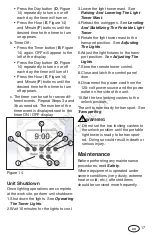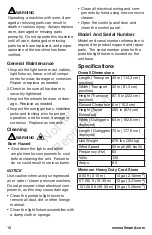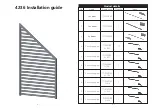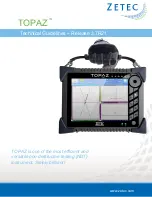
12
www.allmand.com
ground. Set up on smooth, flat and
firm ground surfaces only.
Wind
50mph (80km/h) max
WARNING
Tipover Hazard
Operating with the light tower mast
raised in winds exceeding 50 mph (80
km/h) could cause the unit to tip over,
resulting in death or serious injury. Do
not operate with the light tower mast
raised in winds exceeding 50 mph (80
km/h).
When the portable light tower is in the
operating position it is located in the
middle of a four-point outrigger system
for optimum balance and stability. This
system was engineered to allow the
light tower to remain operational in sus-
tained winds of 50 mph (80 km/h) with
the light tower mast extended to full
height and the outriggers in position on
a firm, level surface.
Leveling and Stabilizing the
Portable Light Tower
WARNING
Tipover Hazard
Positioning the portable light tower on
soft, unstable or unlevel ground could
cause the unit to tip over, resulting in
death or serious injury. Always posi-
tion the unit on a firm, level and stable
surface and deploy the outriggers
before raising the portable light tower.
1. Position the portable light tower on
an adequate work site. See
Work
Site Safety Considerations
. Use
the level as a guide to locate a level
surface: When the bubble (
B
, Figure
6) is in the top center of the level (
A
),
the unit is level.
Figure 6
B
A
NOTE: For most consistent operation,
avoid locating the unit in a shadowed
area, and orient the unit so the control
box faces north.
2. Set the two locking casters to the lock
position.
3. Deploy all four outriggers. See
Deploying the Outriggers and
Jacks
.
Deploying the Outriggers and
Jacks
WARNING
Tipover Hazard
Failure to deploy the outriggers before
raising the light tower mast could
cause the light tower to tip over, result-
ing in death or serious injury. Always
deploy the outriggers before raising
the light tower.
To deploy the outriggers and jacks:
1. Remove the hair pin cotter (
A
, Figure
7) and outrigger locking pin (
B
).
2. Lower the outrigger (
C
, Figure 7) into
the operating position as shown, and
lock in the operating position with
the outrigger locking pin. Secure the
outrigger locking pin with the hair pin
cotter.
Not for
Reproduction













































